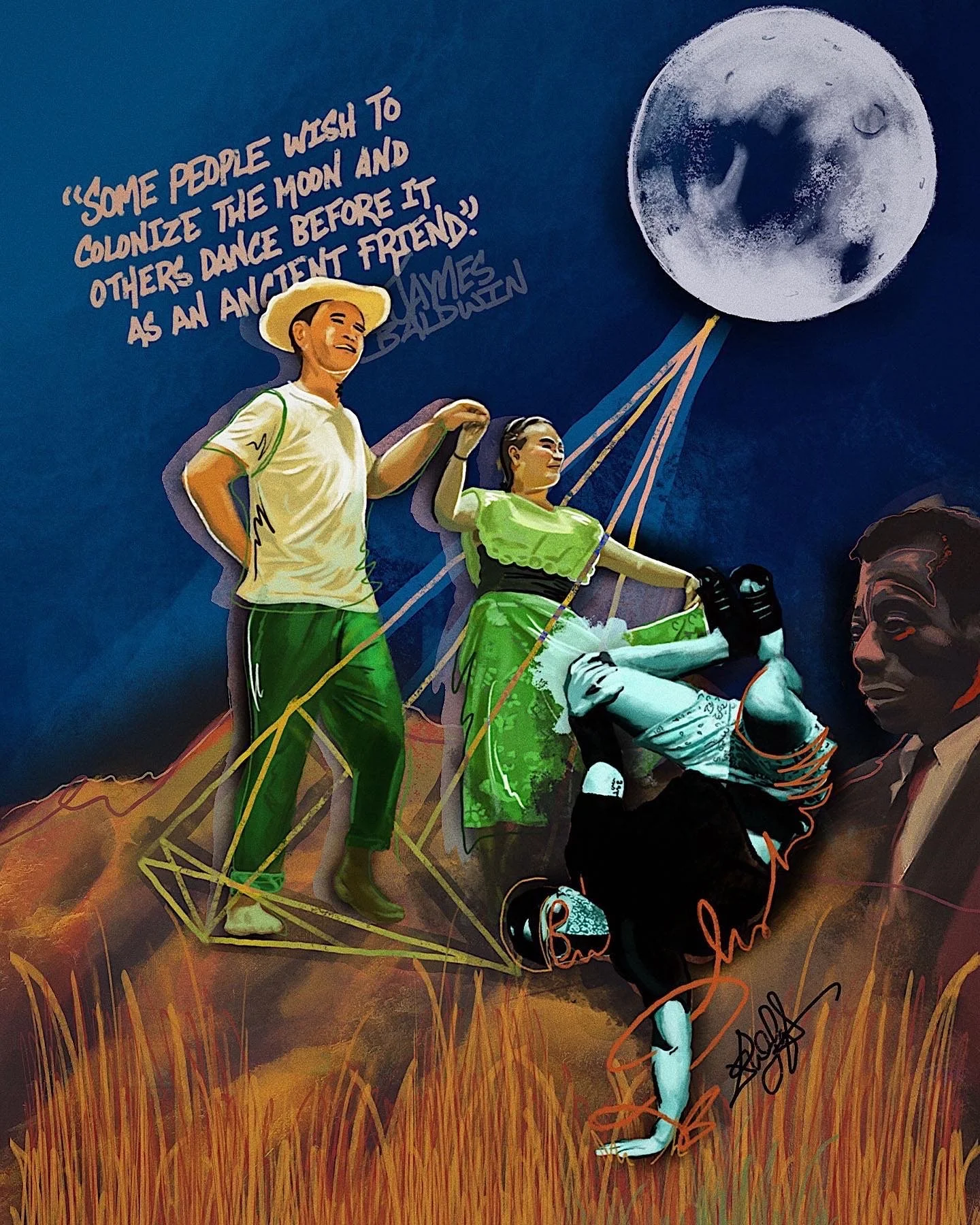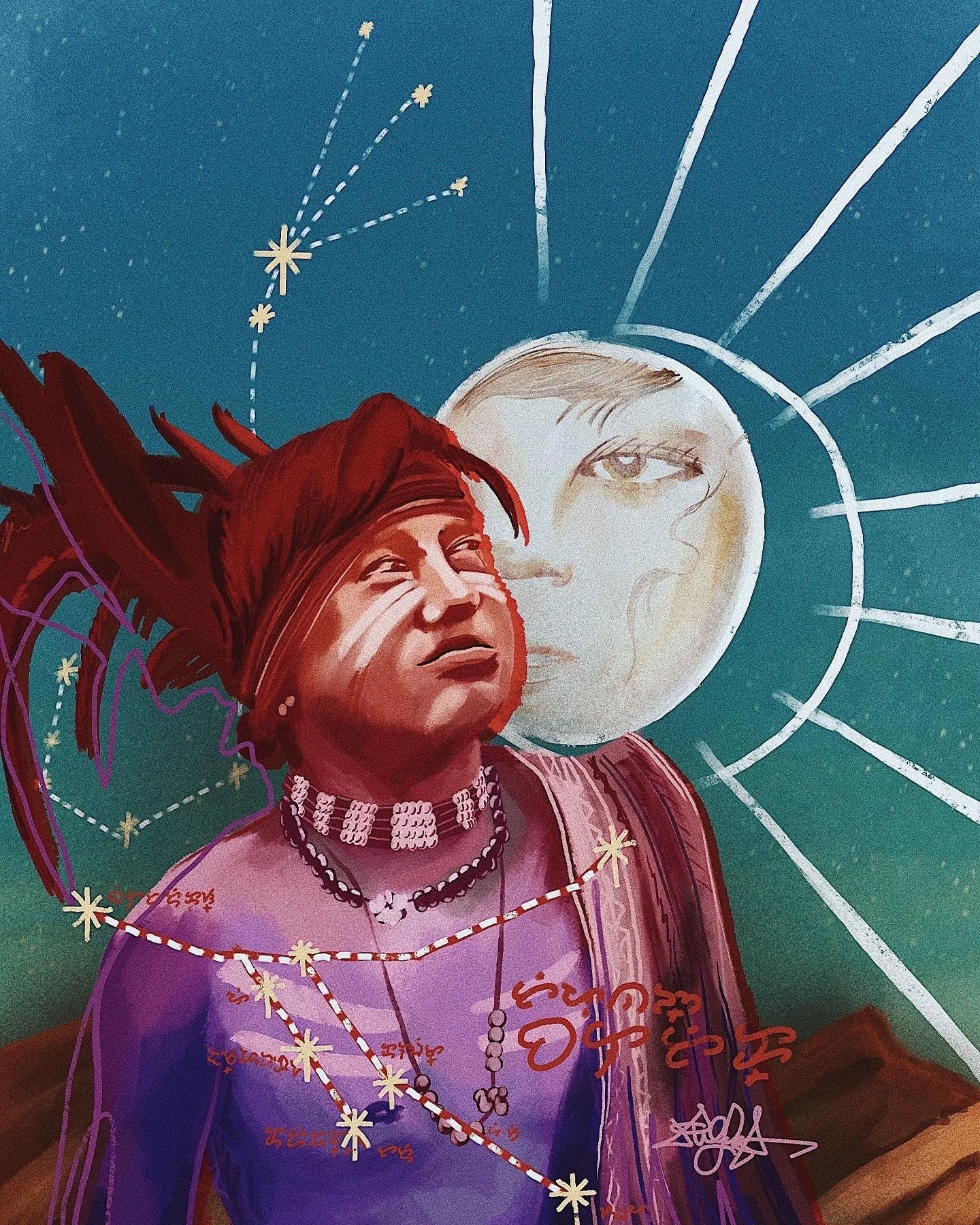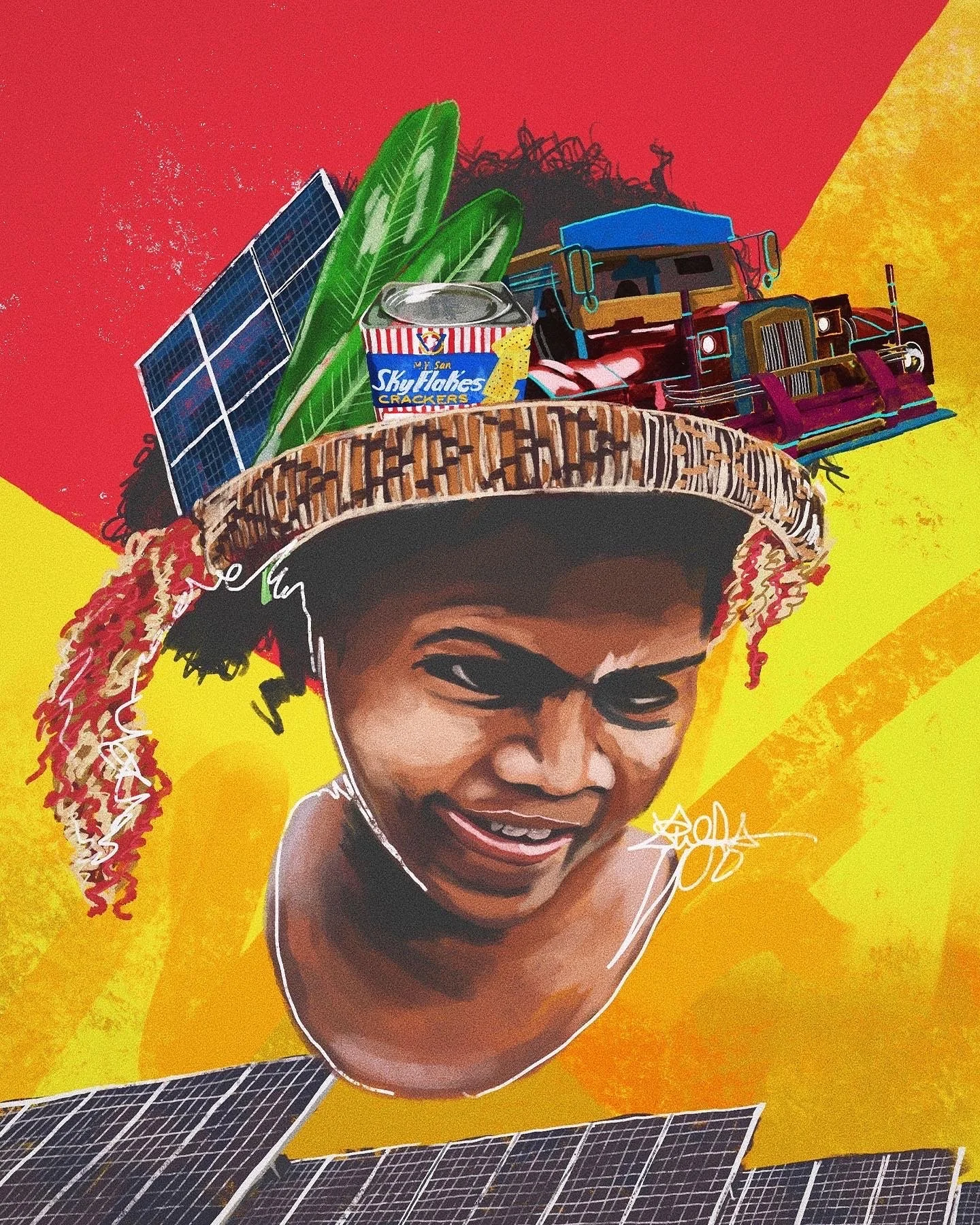Dance Before the Moon
In the 1970s, Africa saw rapid decolonization. At the same time, many in the west spoke openly about it as a “dark continent.” Pushing back on the idea, James Baldwin stated, “some people wish to colonize the moon, others dance before it as an ancient friend.”
This was the idea that kicked off my Filipinos in Space art project. I wondered, what does a decolonized vision of space and the future even look like? With exploration being a big theme in this project, I decided to explore new art styles, working with more edgy layers, fluorescent colors, and gradients.
Featured here are two classic Filipino expressions of dance: the tinkiling- the classic showcase of footwork evading the rhythmic snapping of bamboo poles; and classic breakdance. Often understated in the history of hip-hop are all the Filipino contributions to B-Boyism, especially in LA and the Bay Area.
Children of Mayari
“To marginalized people all around the world: your ancestors connected with God long before the colonizers arrived.” This was a point made in a podcast interview with Brandi Miller I heard a while back.
I injected a good amount of Filipino mythology into this piece. In Kampampangan mythology, the creator of the world, Bathala, left the world without a will, leaving his two children to fight for control. One was Apolaki, the god of the sun, and the other, Mayari- goddess of the moon. As they fought with bamboo clubs, Mayari was hit in the eye and became blind. Apolaki became remorseful and they agreed to share rule of the earth, but at different times.
It’s worth noting that these legends weren’t only for the purpose of entertainment, but they also had a practical role. The depicted constellation is a star formation called balatik, because of its resemblance to a traditional pig trap. In certain areas, the arrival of these stars would signal the start of the planting season.
Futuro
This piece is entirely future focused. The Philippines has made huge economic strides in my lifetime, but what does that look like as the climate crisis threatens the future? The Philippines boasts an impressive environment, but also the highest number of environmental activists killed.
It’s important to note that sustainability wouldn’t be a novel concept for the Philippines. For generations, simple ways of living in harmony with the Earth are scattered throughout the culture. From the use of banana leaf in everything from rice wraps to kamayan spreads, finding ways to use natural materials has been a longstanding custom. The virtue of reusing goods is also recurring. If you have a Filipino grandma, you know those aren’t crackers in the Skyflakes tin.
With a rapidly urbanizing population, those traditional values can be applied to modern solutions. With big investments in solar fields, and possible innovations like a solar jeepney (?!) there are many possibilities.
We The Travelers
When envisioning a decolonized version of the future, without colonial conquest, that doesn’t have to mean omitting travel. Filipinos have been travelers for as long as anyone has recorded history. There’s a popular saying in Pacific Island cultures about how the ocean might separate us, but it simultaneously connects us. One can look between the Philippines, but also places like Taiwan, all the way to Indonesia, Malaysia, and India to see how some cultural elements bear a strong resemblance. From the styles of clothing you’ll see in mainland Southeast Asia, to shared language roots with Indo-Malay dialects. There is travel and cultural exchange apart from a colonial approach.
BAYANIHAN
Bayanihan is the a concept that captures the Filipino spirit of neighborliness, solidarity, and cooperation.
The bahay kubo is just one physical manifestation of the concept of bayanihan: a spirit of civic unity and cooperation among Filipinos.One of the clearest ways you can see this visually play out is in bahay kubo- a traditional style of Filipino housing, especially in fishing communities. The design of the house on stilts gave it versatility as water levels changed, and it also invited community participation into a family’s activity. When it became time to move, an entire community helped move a house along with a family, carrying the structure by its stilts.
When we move, we move together.
Ligayang Rebolucion
A Filipino vision of the future would simply be incomplete if it did not contain a lot of space reserved for joy.
Filipino joy cannot be missed by anyone who observes it, but it can be misunderstood. So often it is mistaken for naivete, passivity, or even acceptance of one’s circumstances, even though they may be the product of injustice. Joy in the face of injustice may be one of the truest forms of resistance.
This image is replete with things that are frequent expressions of joy throughout Filipino culture. Basketball, for starters, alongside a night of karaoke and performance. At the center is a Lolo, a household elder.
MNLiens
This project would risk appropriation without proper homage to the other people groups who inspired some of this thought. In particular, Afrofuturism. This design is an unsubtle tribute to one of the most prominent examples of afrofuturism in hip hop, OutKast’s ATLiens. A lot of the album’s theme spent time focused on being an outsider.
Behind the central figures you have Ida B. Wells, a prominent voice in her time against the Filipino American War. Above her is a Buffalo soldier, the one commonly misidentified as David Fagan. These Black American soldiers famously deflected in support of the Filipino opposition. On the upper left is an Aeta girl, a member of the Philippines’ darker skinned indigenous people group, and a reminder of why Black-and-Brown solidarity matters worldwide. Finally, below her is Larry Itliong
Finally, the term Kapwa - finding one's sense of self that is found among others.








